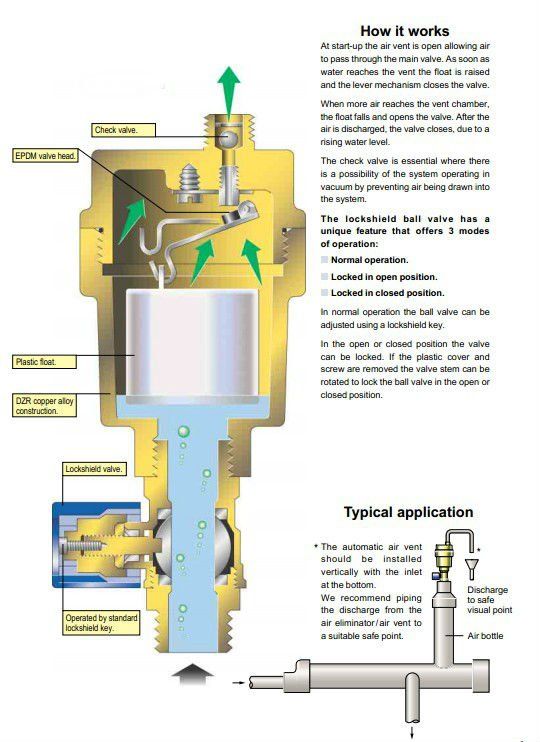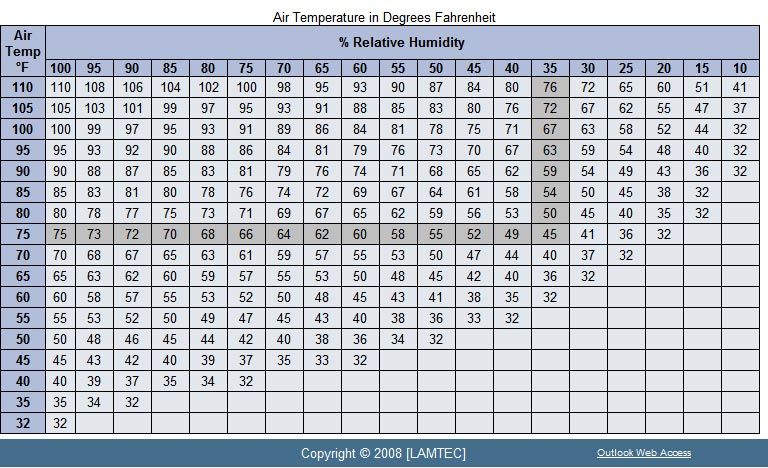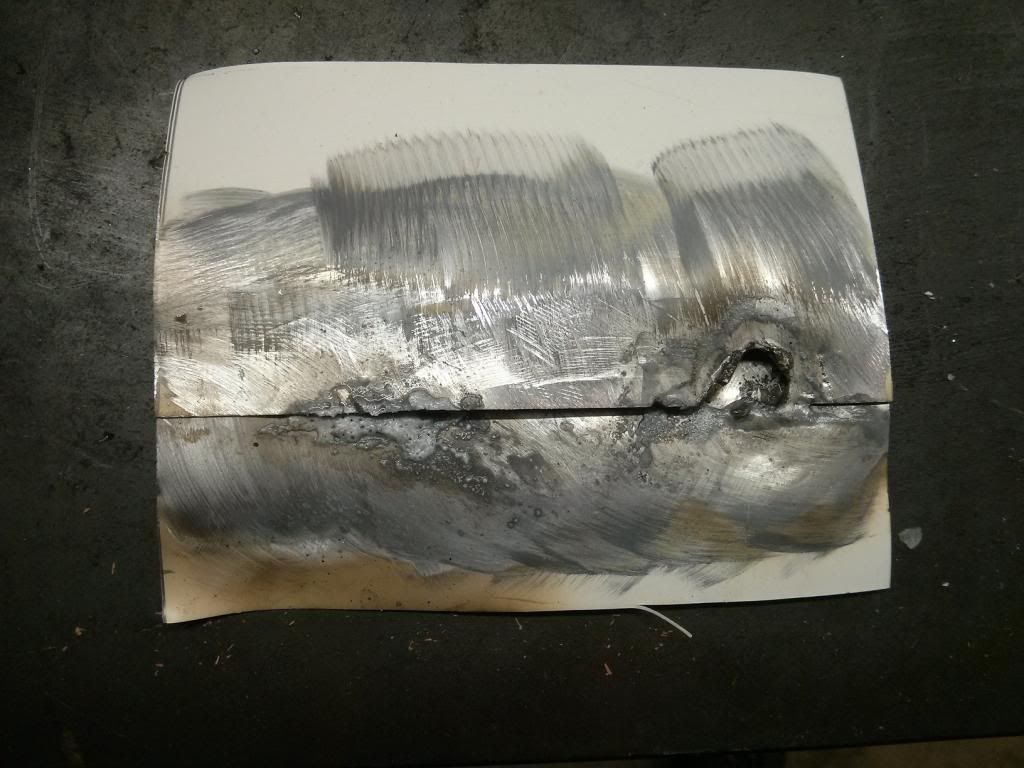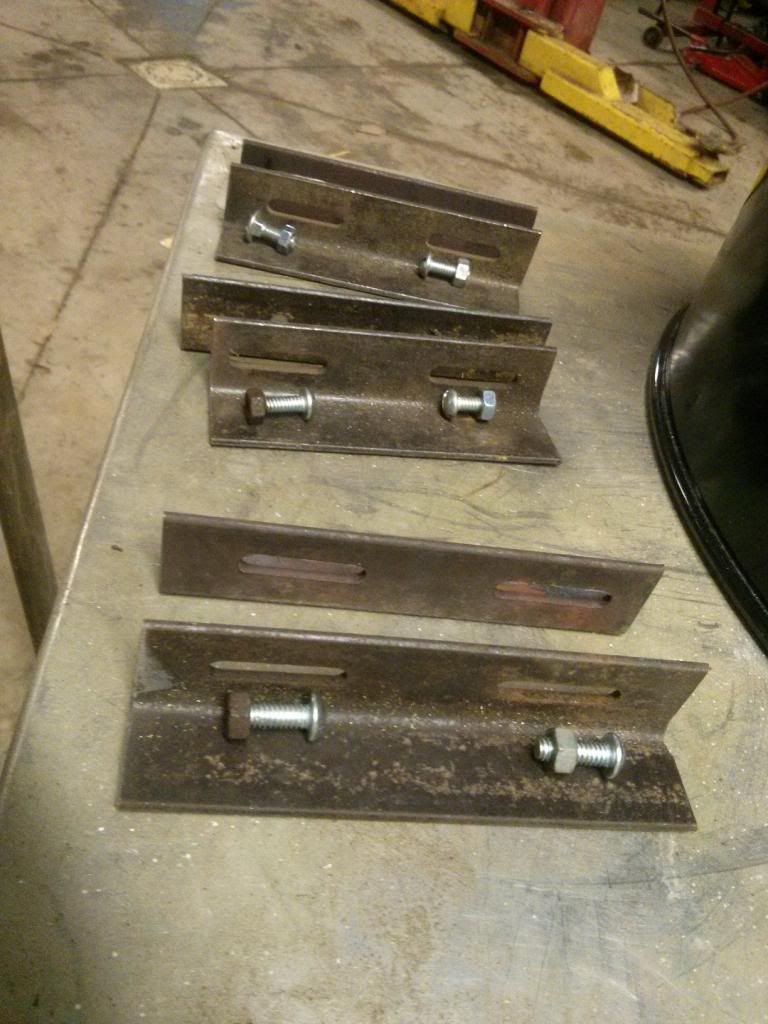Edit: updated Schematic to v2
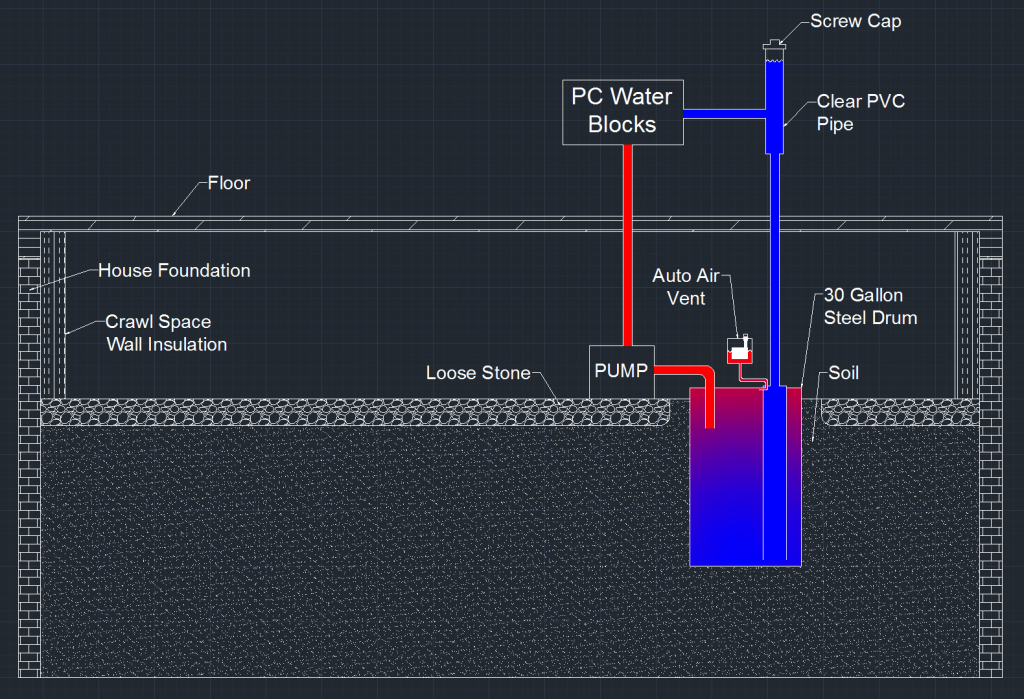
So I finally got fed up with all the noise and dust build-up of my air heatpipe coolers and decided to make my water cooling debut. But if I'm going to go water I might as well go extreme, right? I've always wanted to try geothermal cooling for low noise and overclocking potential but was put off by the sheer amount of manual labor plus copper pipe soldering that would be involved. Then I came across this sweet setup made by Sverre Sjøthun at DWPG.com. Definitely not for the faint of heart but I thought I could simplify the setup a bit to suit my needs.
I decided to bury one of these guys into my crawl space under my house. I would have gone for a 55 gallon drum but my crawl space opening only measures 22 inches at it's narrowest, and that's just a hair too narrow. It's pretty tall down there measuring about five feet (six if you stand between the beams) so it's not too inconvenient to work in.
The computer to be cooled is thankfully on the first floor so I won't need to consider running pipe work through the walls. The ground and air is always at around 55F plus or minus 2 degrees in the crawl space so I don't need to dig any deeper for steady temps.
The drum comes with two threaded openings so that simplifies connections a bit. A 2" and a 3/4". I'll have the 3/4" be the hot return and the 2" be the cold supply. I'd like to make the 3/4" hot return have a nozzle protruding down into the drum to direct the water towards the drum wall at an angle. This should help make a circular current to help reduce the boundary water layer, as well as increase water flow speed with the steel heat transfer surface. That should theoretically help transfer heat to earth faster. The cold supply will have an extension bit on it so it will always take water from the bottom of the drum. I'm not sure if I should also make a nozzle for the cold supply so the water is being taken at an angle towards the drum wall or if it should just make it pointing straight down. So far I've just been guessing at the fluid dynamics so if anyone here has experience or suggestions in this field I would appreciate any feedback you may have.
It also occurred to me to pack some nice fine grain top soil around the drum to seal it in nice and tight.
This will be a total system cooler and that means CPU, GPU, PSU, CPU Mosfets, chipsets, hard drives, SSD, and ram will all be liquid cooled in some way. There will be NO fans whatsoever. I'll be using the extra space in the case to either add sound dampening material to silence the hard drives, or add a radiator and pump for when I want to take this thing backpacking.
If everything works out well I may consider extending this system to other PCs in the house. That may increase the equilibrium temp in the loop but heck, I could always sink another drum down there in the future.
Everything so far has just been a lot of thought and mental experiments on what would would give me the the coolest temps with geothermal without either A) making it noisy, or B) making it ridiculously expensive. Any thoughts, suggestions, or comments would be greatly appreciated.
For those that are curious, my planned computer build will include:
CPU: Intel Core i7 3770K
GPU: either a Geforce 580 or 680*
Motherboard: ASRock Z75 Pro3
RAM: 4x8gb G.SKILL Ripjaws DDR3 1866
Case: AZZA Genesis 9000 Black
PSU: KINGWIN Lazer LZ-1000
Hard drives: six or seven inherited from previous builds
SSD: OCZ Vertex 4 VTX4-25SAT3-512G.M 2.5
*I already have aftermarket air cooling for my 580 so I'm hesitant to ditch it. Plus it's proven to be a sour overclocker.

So I finally got fed up with all the noise and dust build-up of my air heatpipe coolers and decided to make my water cooling debut. But if I'm going to go water I might as well go extreme, right? I've always wanted to try geothermal cooling for low noise and overclocking potential but was put off by the sheer amount of manual labor plus copper pipe soldering that would be involved. Then I came across this sweet setup made by Sverre Sjøthun at DWPG.com. Definitely not for the faint of heart but I thought I could simplify the setup a bit to suit my needs.
I decided to bury one of these guys into my crawl space under my house. I would have gone for a 55 gallon drum but my crawl space opening only measures 22 inches at it's narrowest, and that's just a hair too narrow. It's pretty tall down there measuring about five feet (six if you stand between the beams) so it's not too inconvenient to work in.
The computer to be cooled is thankfully on the first floor so I won't need to consider running pipe work through the walls. The ground and air is always at around 55F plus or minus 2 degrees in the crawl space so I don't need to dig any deeper for steady temps.
The drum comes with two threaded openings so that simplifies connections a bit. A 2" and a 3/4". I'll have the 3/4" be the hot return and the 2" be the cold supply. I'd like to make the 3/4" hot return have a nozzle protruding down into the drum to direct the water towards the drum wall at an angle. This should help make a circular current to help reduce the boundary water layer, as well as increase water flow speed with the steel heat transfer surface. That should theoretically help transfer heat to earth faster. The cold supply will have an extension bit on it so it will always take water from the bottom of the drum. I'm not sure if I should also make a nozzle for the cold supply so the water is being taken at an angle towards the drum wall or if it should just make it pointing straight down. So far I've just been guessing at the fluid dynamics so if anyone here has experience or suggestions in this field I would appreciate any feedback you may have.
It also occurred to me to pack some nice fine grain top soil around the drum to seal it in nice and tight.
This will be a total system cooler and that means CPU, GPU, PSU, CPU Mosfets, chipsets, hard drives, SSD, and ram will all be liquid cooled in some way. There will be NO fans whatsoever. I'll be using the extra space in the case to either add sound dampening material to silence the hard drives, or add a radiator and pump for when I want to take this thing backpacking.
If everything works out well I may consider extending this system to other PCs in the house. That may increase the equilibrium temp in the loop but heck, I could always sink another drum down there in the future.
Everything so far has just been a lot of thought and mental experiments on what would would give me the the coolest temps with geothermal without either A) making it noisy, or B) making it ridiculously expensive. Any thoughts, suggestions, or comments would be greatly appreciated.
For those that are curious, my planned computer build will include:
CPU: Intel Core i7 3770K
GPU: either a Geforce 580 or 680*
Motherboard: ASRock Z75 Pro3
RAM: 4x8gb G.SKILL Ripjaws DDR3 1866
Case: AZZA Genesis 9000 Black
PSU: KINGWIN Lazer LZ-1000
Hard drives: six or seven inherited from previous builds
SSD: OCZ Vertex 4 VTX4-25SAT3-512G.M 2.5
*I already have aftermarket air cooling for my 580 so I'm hesitant to ditch it. Plus it's proven to be a sour overclocker.
Last edited:
![[H]ard|Forum](/styles/hardforum/xenforo/logo_dark.png)
